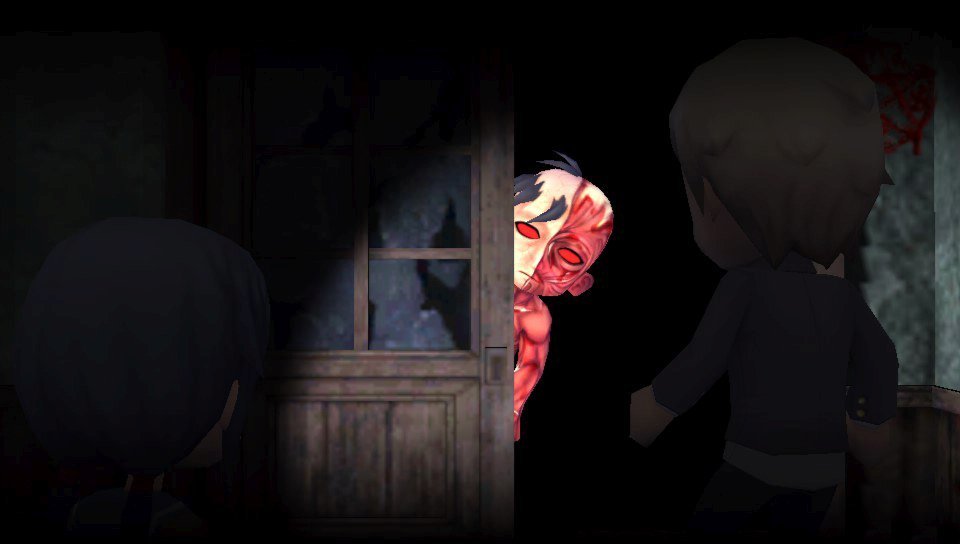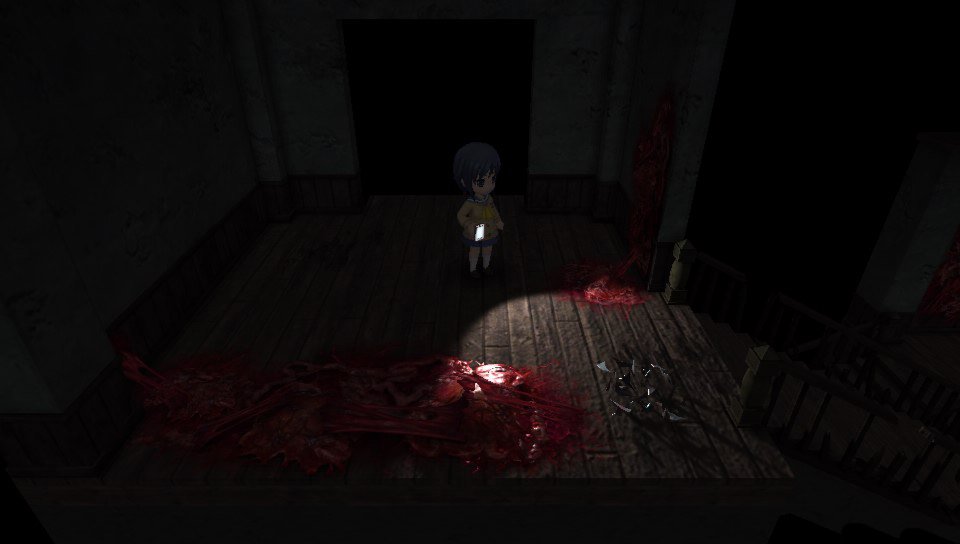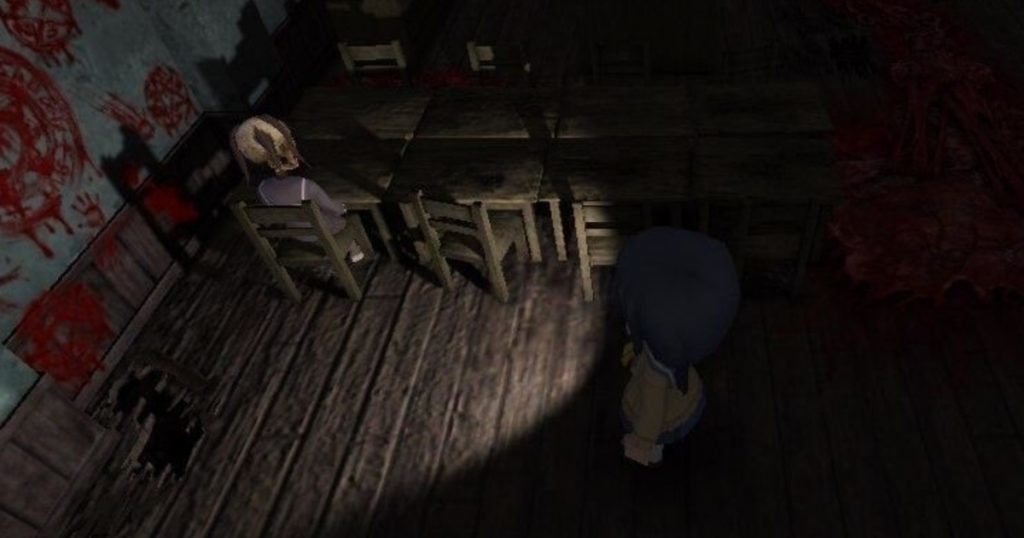One of the more surprising characteristics that I instantly admired about Corpse Party Blood Drive are the parts where it faithfully recreates the experiences of some of the more popular survival horror games from the late 90’s era on PlayStation One and PS2. More specifically, the game captures the spirit of early survival horror games that emphasized exploration over combat, survivability with very limited resources available, light puzzle solving, and stealth game play elements, all while being confined to dark oppressive environments with haunting sounds and atmosphere, not unlike the early Silent Hill and Resident Evil game series. While the exploration parts resembling the survival horror games from the past adds to the nostalgia factor, it does also make it feel somewhat dated, although it does have a unique charm of its own, offering a bit of modernization by front loading each exploration section with visual novel storytelling that provides tons of expository dialog and character interactions presented in a cutesy Chibi anime style, which unfortunately sometimes feels at odds with the games overall heavy dark tone.
The Corpse Party video game series, developed by Team GrisGris, has an interesting release history on portable systems. The first portable entry on the PSP was a top down, adventure-like, horror game that had more of a retro 16-bit graphical art design to it similar to RPGs and adventure games from the SNES console era. The direct sequel to that game titled “Book of Shadows”, ditched the sprite art and top-down view altogether, opting for a purely visual novel approach, and now the newest game titled “Blood Drive” has opted for a hybrid style, with one part being visual novel, and the other featuring full 3D exploration.
The plot of each game revolves around a group of high school students trying to escape a haunted elementary school called Heavenly Host Elementary School, which exists in another dimension and is filled with enemies, traps and puzzles. The story is continued with each game, so they each share similar events, characters and setting and typically revisit the plot events of the previous game. Although the means for traveling to Heavenly Host changes which each game, either by ritual, a magic book or in the case of this game a device called a ‘blood drive’ that allows students to travel to the ‘other world ’ school at any time. This particular outing focuses on female protagonist Ayumi, a survivor of the events from the previous game. The feeling of resentment and guilt after the death of her friends compels her to go searching for the “Book of Shadows” that she lost in the haunted school in the previous game because she believes it can bring her friends back to life. Thus, she along with fellow survivors and new students plunge back into the abyss.
Blood Drive is a linear horror game that’s one part visual novel and one part adventure. The game is divided into lengthy chapters, with each chapter beginning with a long visual novel introduction before entering the haunted school, which is a fully rendered 3D map composed of several floors and containing multiple rooms to explore, just like the mansion from Resident Evil 1. Progression to the next chapter requires searching all the rooms for clues, finding keys, interacting with NPCs, and triggering story events through exploration. The map is extremely dark and full of traps. You can sustain injuries by stepping through unseen wire traps, broken glass or falling through loose floor tiles, as well as sustain damage from enemy encounters. To make things easier you can use curative items like bandages you find in the school to heal yourself or sometimes swap out partners if one takes too much damage. There is also a useful flashlight which is essential to avoiding traps and successfully navigating through the world. If you aren’t up to facing enemies you can jump into a nearby closet and hide until the enemy moves on. If there wasn’t enough stress to worry about, there is also a sanity meter that distorts the screen if your character witnesses too much horror.
One of the biggest gripes I have against the game is the long loading screen times that appear whenever I entered a new hallway, room or simply accessed the inventory screen. Long loading screens occurred in the original Resident Evil games whenever you opened a door to a new room, but that had the added effect of creating suspense, where in Blood Drive, backtracking and retreading over previously explored areas is essential to story progression and long load screens just serve as more of an annoyance than anything else. Despite that problem, I was thoroughly impressed with the sound design all around. The soundtrack is appropriately atmospheric and the voice acting (Japanese only) is wonderfully convincing and cut through the cutesy anime character design. The game is a really wonderful throwback to 90’s era survival horror games, if you don’t mind the backtracking, cheap trial and error progression and too long loading screen times.
This review is based on a review copy of Corpse Party Blood Drive developed by Team GrisGris published by XSEED.
- Sound Design
- Voice Acting
- Narrative
- Long Loading Screens
- Trial and Error
- Backtracking




